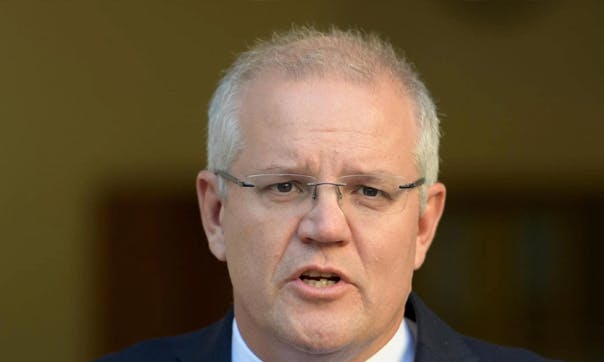What will the government’s tax cuts do?

Magic puddings are those wonderful sources of endless wealth upon which rest dreams of budget surpluses, high wages, health and welfare for all.
In the real world, there are no magic puddings. The capitalist class gets most of its income from exploiting the working class. The Morrison government’s response to a slowing economy – a tax cut program totalling $158 billion over 10 years – will benefit the rich more than workers.
If it were a fair world, workers would pay no tax; it would be the ruling class and business bearing the cost of providing services and infrastructure. Most of us know it isn’t a fair world, but a clear majority are prepared to forgo tax cuts if it means decent health, education and welfare services. Aged care, youth justice, you name it – services are crying out for more assistance while many millionaires pay zero tax. The threat to future services is real when you consider that Australia already has the seventh lowest tax base in the OECD.
What will Morrison’s tax cuts deliver? Besides the drain on future budgets, which will cut services, people earning $200,000 or less – the vast majority – will get a tax cut three times in coming years – 2019, 2022 and 2025.
The tax cuts, the government claims, will stimulate the economy and compensate for slow wages growth, the worst since World War Two. But the stimulus is overrated. At a projected 0.6 percent impact, these tax cuts are just a quarter of the stimulus package rolled out after the 2008-9 global financial crisis.
The government is also planning to reduce the small and medium company tax rate to 25 percent by 2022, saying this will result in greater investment, more jobs and higher wages.
The real lie, however, is that the new tax regime will benefit “low and middle income” workers the most and that there will be no cuts to services. Richard Denniss from the Australia Institute calls Morrison’s tax plan a revenue time bomb, the “right wing ratchet”: cutting taxes for your friends in the good times, then cutting funding and services in the bad.
Workers with incomes between $48,000 and $87,000 will get an immediate tax cut of $1,080, rising to $2,130 a year by 2025. But for those earning less than $44,000, the maximum tax cut will be $980 by 2025. Those earning $21,000 will get a maximum of $87 by 2025. Those earning between $22,000 and $29,000 will get $255. Overall, as Michael Pascoe in the New Daily points out, those on $60,000 will have their tax cut by a mere 0.7 percent, while those on $200,000 will get a 5.7 percent cut.
Those with an income of more than $180,000 (i.e. the richest 4 percent of people in the country) will get a tax cut of between $7,000 and $11,000 a year by 2025 – that is, those who haven’t already avoided tax by incorporating and paying company tax rates, by using trusts or by negative gearing. The 500,000 people in this tax bracket will rake in around 40 percent of the tax cuts. The other 10 million taxpayers will share the remaining 60 percent. The rich clearly come out in front.
Compare this to the cut to Sunday penalty rates kicking in from 1 July, affecting at least half a million workers. In hospitality, they will be from $436 to $545 a year worse off. In retail, they’ll lose almost $860 a year.
And, as Australian Council of Social Services chief Cassandra Goldie asked in a press release, “Are we really going to give people on $200,000 a tax cut of $11,000 per year before we increase Newstart [from $15,000 a year]?”
Tax is about how society redistributes the wealth created by workers. Morrison’s tax cuts, dressed up as a win for low and middle income workers, are yet another blatant grab for the ruling class rich.